The escalation of COVID-19 in India, Thailand, and most recently Taiwan has attracted considerable international attention. Overlooked in this reporting are the rising cases and deaths in Cambodia, which appeared to have a strong track record on COVID-19 until recently.
As of January 2021, one year after reporting its first case, Cambodia had reported zero deaths and only 400 total cases, garnering varying degrees of praise. Its initial success has also come into question, however. Some experts suggest the country had been undercounting its COVID-19 cases. They also point to other factors that contributed to the country’s COVID-19 performance, such as the quick and effective measures put in place by its larger and wealthier neighbors, Thailand and Vietnam, who had been two of the better performers against COVID-19 in the region. In addition, Cambodia’s performance benefited indirectly from its comparatively young population and the substantial international aid it has received. These factors gave Cambodia an edge against the coronavirus, raising doubts about whether its government had actually been responsible for this initial success.
Then, in late February, a new wave of community transfers which has yet to be contained hit the country. Cambodia finally recorded its first official death from the pandemic on March 11, with the total case count at 1,163. As of May 18, Cambodia had 159 deaths and 23,282 total cases. The country’s weak health care system is incapable of keeping up with the exponential growth in COVID-19 cases, as hospitals turn people away.
Cambodia’s relations with its neighbors are being tested by these rising numbers. Twelve cases from the February 2021 cluster were found to be the B.1.1.7 variant of the virus, first identified in the United Kingdom, with higher rates of transmission and mortality. A virologist in Thailand has suggested that the new variant spreading in Thailand at an alarming rate may have come from migrant workers crossing over from Cambodia. The emerging “blame game” could further complicate the already historically difficult relationship between Cambodia and Thailand. Moreover, Vietnam has also voiced concerns about cross-border transmissions.
Cambodia’s pervasive corruption has contributed to the expanding COVID-19 numbers. The February 2021 cluster that spawned this new wave has been linked to four Chinese nationals who were caught on caught on CCTV bribing security guards and fleeing quarantine. The growth of this “foreigners disease” risks fueling antagonism against China among ordinary Cambodians, though long-serving Prime Minister Hun Sen is a staunch ally of Beijing.
Cambodia’s governance capabilities are being put to the test. This spike in COVID-19 cases unfortunately coincided with the country’s traditional new year celebrations (April 13-15). The government mandated an inter-provincial travel ban and the cancelation of new year celebrations in major cities in order to curb community spread. Yet hundreds of Cambodians around the country were caught violating the travel bans and placed in mandated quarantine.
Authorities in Cambodia have tried policing the lockdowns and travel bans through a strict COVID-19 law passed in March, which sets prison terms of up to three years for breaking quarantine orders and up to 20 years for any organized group intentionally spreading the virus. Rights groups like the Human Rights Watch have warned that this law could be abused to suppress dissent in Cambodia, where the government has a track record of cracking down on opposition voices. Such harsh laws have been abused elsewhere, perhaps most famously in neighboring Myanmar, where the military authorities, which seized power in a coup in February, charged deposed leader Aung San Suu Kyi with violating COVID-19 restrictions. The previous month, Cambodia’s Ministry of Post and Telecommunications and Ministry of Health implemented a “Stop COVID-19” QR Code system that lacks privacy protections for personal data. This has stoked privacy concerns that it could put government critics and activists at even greater risk.
In mid-April, the government also started implementing a last-minute lockdown in Phnom Penh and Takhmao city, the capital of Kandal province. The execution and follow-through of this measure has been troubling. After an audio message from Prime Minister Hun Sen was leaked and circulated on social media on April 13, suggesting there would be a citywide lockdown in the capital, locals rushed in dangerously large crowds to grocery stores and markets. The prime minister’s Facebook page finally put out the official government order the next day, mandating an immediate lockdown. The suddenness of the announcement and the lack of clarity in its messaging created chaos. Cambodians seeking more guidance on the directive flooded a messaging group set up by Phnom Penh City Hall on the Telegram messaging app, with many questions and complaints left unanswered.
Meanwhile, the Cambodian government has continued to update the lockdown measures, establishing a “three color system” that declared some districts as “red zones” in which people are banned from leaving their homes under any circumstances and markets and food vendors are closed. The police even used canes to enforce the lockdown, forcing violators back into their homes — with videos surfacing of this harsh tactic. On May 7, the government lifted its blanket lockdown measures in Phnom Penh and replaced them with unspecified restrictions, despite warnings by health experts of a possible surge. News reports came out of crowds leaving Phnom Penh and Takhmao and heading out to the provinces.
Although Hun Sen has assured Phnom Penh’s residents that “brothers and sisters will not face starvation” due to the myriad COVID-19 restrictions, reports have emerged of the city’s economically vulnerable population going hungry. The government has reportedly not been effectively distributing food and aid, and they also have been slow to adequately compensate factory workers, farmers, and food sellers who have been forced to stop working. A community survey by international NGOs found that people in red zones have felt overwhelming pressures due to food shortages, loss of income, and mental health challenges. The Coalition of Cambodian Farmers Community has been able to distribute cash aid worth approximately $40 to individuals in need, while asking authorities to better facilitate humanitarian support. Cambodian labor and human rights group CENTRAL have also voiced concerns regarding the conditions of workers stuck in red zones, reaching out to authorities for greater clarity and support.
The government denies these concerns. On April 30, government spokesperson, Phay Siphan, responded to claims that Cambodians are going hungry, saying, “They just fabricate the news. It’s not true.” On May 4, the government banned journalists from broadcasting live from red zones in the capital and from reporting misleading conclusions, while Kandal province authorities have reportedly ordered farmers not to post “negative pictures” of crops spoiling in their fields because markets have been closed during lockdowns.
Meanwhile, the Cambodian government appears to be moving as quickly as it can to mitigate the spread of the disease through its vaccination program. As of May 18, Cambodia has reportedly administered 3.4 million vaccine doses (out of a total population of nearly 17 million). However, only 7.78% of the population has been fully vaccinated, and the government is also confronting vaccine skepticism, particularly in regard to the efficacy and safety of Chinese vaccines. This has pushed the government to initially enforce mandatory vaccination for working Cambodians, threatening their employment if they refuse to receive the jab, before reversing course after desperate workers trapped in red zones protested for faster vaccinations as a result of these threats.
Cambodia’s numbers appear to be easing somewhat, but its COVID-19 surge is nowhere near contained. As implementation of and compliance with COVID-19 measures continue to be inconsistent, the country’s poor are suffering disproportionately while concerns grow about infringements on fundamental rights and freedoms. The potential good news is that, after contracting by 3.1% in 2020, the Asian Development Bank is now forecasting that the Cambodian economy will rebound by 4% in 2021 and 5.5% in 2022. To achieve this level of economic growth, however, the country will have to adequately and equitably mobilize resources against COVID-19, implement consistent and transparent guidelines, and step up its vaccination campaign.
Cambodia is not alone in experiencing a surge in the pandemic, and it will need to be vigilant to reduce transmission as nearby countries scramble to get their cases under control. Unlike the first year of COVID-19, when exogenous factors appeared to contribute to its low numbers, Cambodia will have to work harder to save itself.
The Brookings Institution is committed to quality, independence, and impact.
We are supported by a diverse array of funders. In line with our values and policies, each Brookings publication represents the sole views of its author(s).

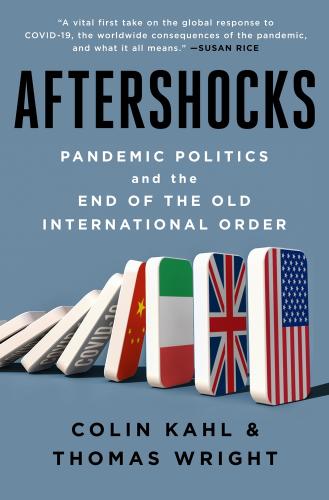
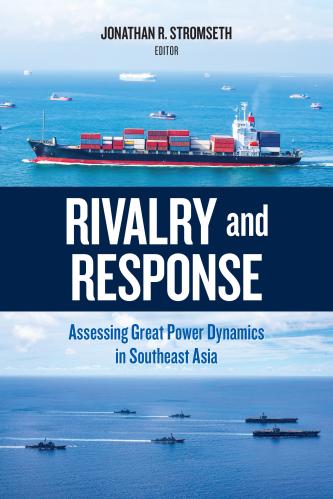
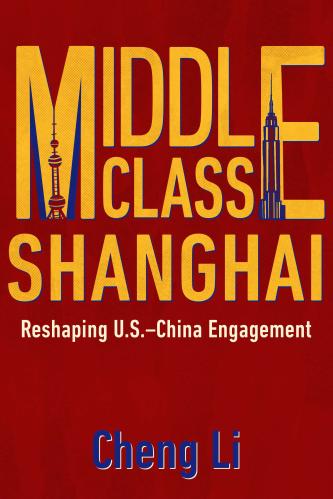
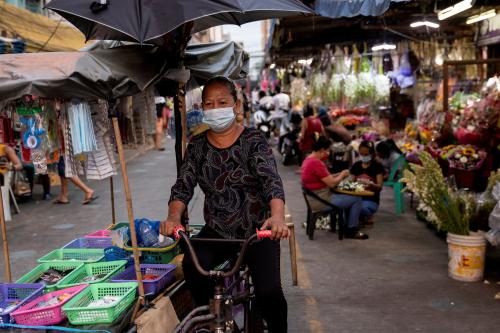
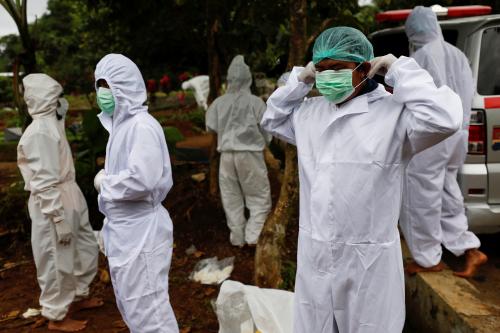






Commentary
COVID-19 comes to Cambodia
May 19, 2021